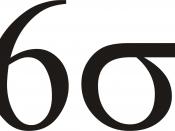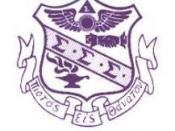1. Introduction
Management should understand that quality management is one of most dominant force and preoccupation in all organizations and industries. The Quality Guru provides not only provides awareness and philosophies, also the approaches and tools for practices and application for organization Their Quality Gurus may have different theoretical system and practice. Different approaches may have own strengths and weakness. It can be estimated that one quality theory may not apply to all organizations brining them excellent improvement.
For example, Japanese Kaoru Ishikawa introduces seven circle concepts. For the quality circle concepts, (Ishikawa 1985) defines it as "a small group to perform quality control activities voluntarily within the same workshop. This small group carries on continuously as a part of company-wide quality controls activities self-development and mutual development control and improvement. This approach also can be called KAIZEN, which has been vigorously marketed in the West as a means of improving quality.
Adaptations have been various and of varying effectiveness; in some companies, circles have been successful or regarded as such, in others, they have failed. The senior American Quality Guru Joseph Juran, in particular, has gone further, in throwing doubts on their likely effectiveness in the west at all where few company hierarchies are permitted with executives trained in quality management.
Juran believes that the major problems in quality control are the management rather than poorer workmanship on the shop floor. (Juran 1980) "Management controllable defects account for 80% of the problems." Thus, long-term training should start at the top. According to the (Juran 1980), it should "establish specific gals to be reached; establish plans for reaching the goals; assign clear responsibilities for reaching the goals and base the rewards on the results achieved. It is recently furthered developed to '6 Sigma method' and widely used in many...


